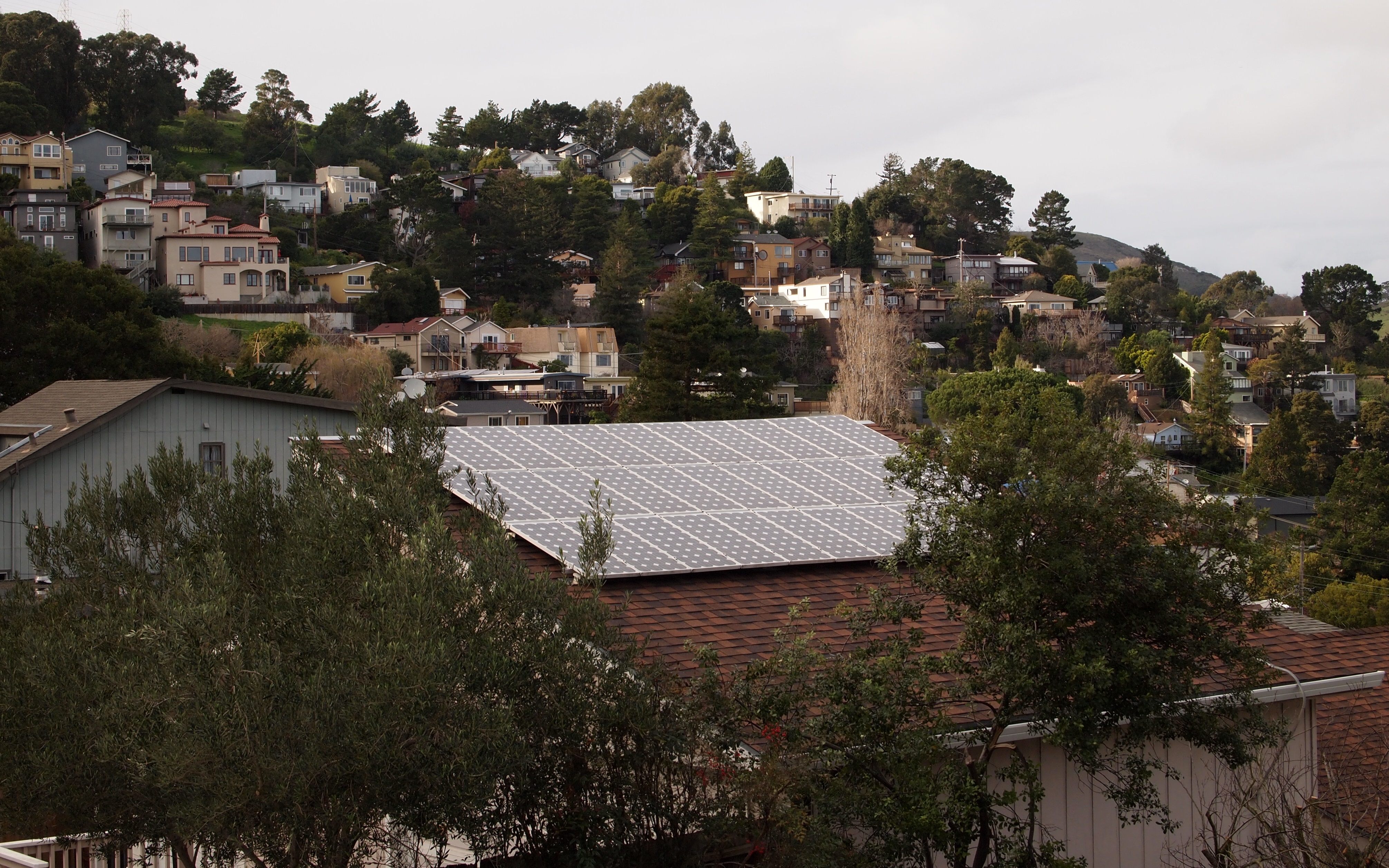Renewable Energy and Reduction of GHG Emissions
 The latest update to the California Building Code (CBC) was adopted by Ordinance No. 643 and is effective on January 1st, 2020. The CBC requires new construction be more energy efficient and includes solar requirements for new residential construction. Further demonstrating its leadership in sustainability, through Ordinance 643, the City of Brisbane has chosen to exceed the state’s standards by requiring new development to include a modest on-site renewable energy generation component for non-residential development as well. Specifically, the City’s building code will require installation of solar photovoltaic (PV) for new buildings for on-site energy generation.
The latest update to the California Building Code (CBC) was adopted by Ordinance No. 643 and is effective on January 1st, 2020. The CBC requires new construction be more energy efficient and includes solar requirements for new residential construction. Further demonstrating its leadership in sustainability, through Ordinance 643, the City of Brisbane has chosen to exceed the state’s standards by requiring new development to include a modest on-site renewable energy generation component for non-residential development as well. Specifically, the City’s building code will require installation of solar photovoltaic (PV) for new buildings for on-site energy generation.
The solar PV requirements range from a minimum of 3 to 5 kilowatt systems for non-residential buildings. These requirements are fairly modest and may be considered as a starting point for individual applicants to right-size to a larger system based on site specific design considerations.
Additionally, new residential and non-residential development will be required to be all electric, to reduce greenhouse gas emissions, and will also need to provide electric vehicle charging infrastructure. Further details are provided in Ordinance 643.
The provisions of the ordinance will not apply to existing homes or businesses; so remodels and additions to existing structures will not be subject to these requirements, although the City continues to encourage solar installations on existing buildings and has a streamlined permitting process for those applications (see the Residential Rooftop Solar Page).
An important streamlining ordinance to facilitate solar retrofits on existing building is Ordinance 622, which allows that flush-mounted rooftop solar systems are exempt from building height limits. To be considered flush-mounted, the panels may not extend more than twenty-four (24) inches above the roofline of the structure on which they are mounted, measured from the exterior roofing material to the highest point of the panel. Non-flush mounted panels extending more than 24 inches above the roofline are still subject to compliance with the building height limits of the zoning district in which the building is located.
If you have questions regarding these code provisions, or if you have other questions about building construction requirements, please contact the Community Development Department at (415) 508-2120.
